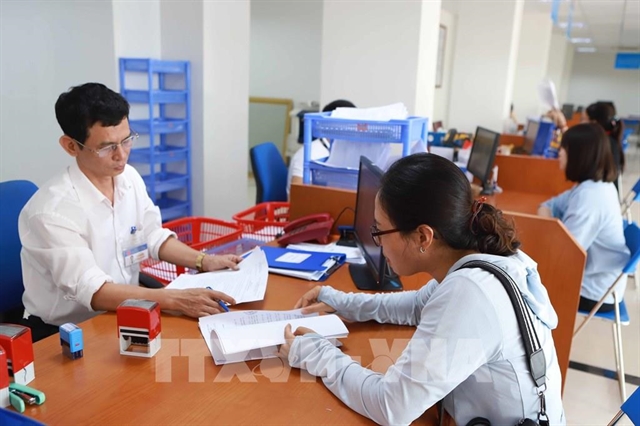 Economy
Economy


|
| Taxpayers at local tax offices. Many people said the adjustment was appropriate given the sharp rise in living costs. — VNA/VNS Photo |
HÀ NỘI — Việt Nam’s National Assembly Standing Committee has approved a resolution to raise personal income tax (PIT) deduction thresholds from the 2026 tax year, a move seen as easing pressure on workers hit by rising living costs.
Under the new policy, the deduction for each taxpayer will rise from VNĐ11 million to VNĐ15.5 million (US$590) per month, and for each dependent from VNĐ4.4 million to VNĐ6.2 million.
Many people said the adjustment was appropriate given the sharp rise in living costs. According to Government data, the consumer price index has increased by around 21 per cent since the last revision in 2020.
Nguyễn Văn Được, general director of Trong Tin Accounting and Tax Consulting Co, said existing thresholds no longer matched real living expenses.
“Wage earners have endured outdated deductions for too long,” he said. “The higher levels are reasonable and fair, reflecting price increases and daily costs.”
Được added that deductions should be revised more flexibly in line with consumer price index (CPI) changes, rather than waiting until inflation exceeds 20 per cent. He proposed allowing the Government to act when CPI rises 5–10 per cent.
Many workers also welcomed the change.
Office employee Nguyễn Thị Thu in Hà Nội said the current VNĐ11 million threshold barely covers basic expenses. “If the deduction rises to VNĐ15.5 million, it would be much more reasonable and give workers more room to save,” she said.
In Thanh Hóa Province, primary school teacher Nguyễn Thị Hoa said the increase would “greatly ease pressure on families with small children”, as living and education costs have risen faster than salaries.
IT engineer Hồ Nhật Tùng in HCM City said the adjustment was a positive step but urged for regular updates rather than changes every five to seven years.
“Prices rise every year – if the deduction remains unchanged, workers will be at a disadvantage,” he said.
Some economists worry about a temporary fall in budget revenue – estimated at about VNĐ21 trillion a year – but Được argued the loss could be offset by expanding the tax base and tightening collection in areas such as property, e-commerce and transfer pricing.
He stressed that the key was to nurture long-term revenue sources rather than over-taxing, as easing pressure on taxpayers would encourage spending and investment, thereby supporting economic growth and sustainable budget revenues.
In its proposal, the Government mentioned two options. In the first one, with a projected cumulative CPI increase of 21.24 per cent from 2020 to 2025, the deduction for taxpayers will rise from VNĐ11 million (more than $417) per month to about VNĐ13.3 million, and from VNĐ4.4 million to VNĐ5.3 million per month per dependent. This would reduce State budget revenue by about VNĐ12 trillion per year.
In the second one, adjustment will base on per capita income and GDP growth.These indicators increased by approximately 40–42 per cent since 2020, according to the National Statistics Office. Under this plan, the deduction for taxpayers would increase to around VNĐ15.5 million per month, and to VNĐ6.2 million per month per dependent. This option would reduce state revenue by about VNĐ21 trillion per year.
The Standing Committee chose the Government’s second proposal, based on growth in per-capita income and GDP, rather than a smaller CPI-linked increase. Lawmakers said the decision better reflects current income levels and purchasing power.
Analysts view the new deduction as part of wider tax reform to make Việt Nam’s PIT system fairer, more adaptive and more people-centred. — BIZHUB/VNS




